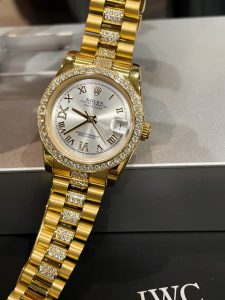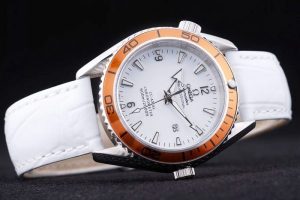10 GMT Watches Redefining Travel Timekeeping
In the wake of Baselworld 2025, the Rolex GMT-Master II has dominated headlines, with its “Pepsi” and “Root Beer” iterations sparking frenzied demand. Yet amid soaring premiums and scarce availability, a world of alternatives beckons-watches that blend heritage, innovation, and accessibility without compromising on the GMT function’s core utility. From aviation pioneers to modern horological rebels, these ten best watches challenge the notion that tracking multiple time zones requires a Crown on the dial. 
Born in 1959 alongside the jet age, the replica Rolex GMT-Master became a staple for pilots navigating transcontinental routes. Its iconic rotating bezel and fourth hand offered a seamless solution for dual-time tracking, earning favor with figures like Fidel Castro, whose weathered 1675 reference remains a symbol of utilitarian elegance. The GMT-Master II, introduced in 1983, evolved with ceramic bezels and advanced movements, yet today’s market sees enthusiasts clamoring for stainless-steel models at double their $9,250 MSRP. While the allure is undeniable, alternatives from Omega, Tudor, and beyond prove that GMT mastery isn’t confined to Rolex’s domain.
Omega Seamaster Planet Ocean GMT ‘Cookies & Cream’
Boasting a 43.5mm case and Omega’s METAS-certified Co-Axial Calibre 8606, this model marries technical prowess with bold aesthetics. Its black-and-white ceramic bezel-a first for dual-color ceramic technology-contrasts sharply with Rolex’s monochromatic approach. Water-resistant to 600 meters and equipped with a silicon hairspring, it’s a diver’s GMT, though its 17mm thickness demands wrist confidence. At $8,000, it’s a statement piece for those valuing anti-magnetic resilience and avant-garde design. 
Tudor Black Bay GMT: The Understudy’s Triumph
Tudor’s $3,900 answer to the “Pepsi” frenzy tempers flamboyance with muted burgundy-and-blue aluminum. Housing the in-house MT5652 movement, its 70-hour power reserve and jumping hour hand cater to practicality, while the matte bezel appeals to purists wary of Rolex’s gloss. Though criticized for Tudor’s iterative designs, the Black Bay GMT’s execution-down to the riveted bracelet-proves that refinement often trumps reinvention.
Oris Big Crown Pro Pilot Calibre 114: The Tactician’s Tool
For globetrotters negotiating 30-minute time zones, Oris’s $6,100 manual-wind marvel offers unparalleled precision. Its Calibre 114 allows half-hour adjustments, a boon for destinations like Adelaide or Kathmandu. The 44mm case houses a 10-day power reserve, appealing to those who savor the ritual of winding, while its legible dial and aviation-inspired crown echo the GMT-Master’s pilot roots with a modern twist.
Grand Seiko SBGE201G: The Quiet Precisionist
Spring Drive technology elevates Grand Seiko’s SBGE201G beyond typical GMT fare. The 9R66 movement achieves ±1 second daily accuracy, paired with a lumed bezel and Zaratsu-polished indices. At 44mm, its heft is offset by a seamless glide motion seconds hand and 72-hour reserve-a fusion of Japanese craftsmanship and technical ambition at $6,800.
Squale 30 ATMOS Black GMT Ceramica: Budget Without Compromise
Proving affordability needn’t sacrifice substance, Squale’s $700 gem pairs an ETA 2893-2 movement with a ceramic bezel-a rarity at this price. Its 42-hour reserve and 300m water resistance echo professional dive specs, while retro styling nods to Squale’s legacy as a case supplier for Blancpain and Heuer. A stealth pick for value-driven collectors.
Dodane Type 23 GMT: French Military Ingenuity
With NATO heritage and pushers that increment local time, Dodane’s $3,700 Type 23 channels Gallic pragmatism. Its Dubois Depraz module enables third-zone tracking via a 24-hour bezel, wrapped in a 43mm case reminiscent of vintage cockpit instruments. A niche choice for those valuing historical pedigree and tactical functionality.
Breitling Navitimer 8 B35 Unitime: The Worldtimer’s Edge
Breitling’s $8,140 Unitime condenses global tracking into a tool-watch ethos. A rotating bezel tracks flight times, while the AL-550 movement’s independent hour hand and 100m water resistance cater to pilots and adventurers. Its clean dial, devoid of Navitimer’s usual clutter, honors Louis Cottier’s 1930s worldtimer legacy with contemporary rigor.
Linde Werdelin 3-Timer: The Alpine Maverick
Scandinavian minimalism meets mountaineering grit in this $12,000 standout. Interchangeable straps and module docks for altimeters cater to adventurers, while its angular case and luminous accents defy traditional GMT aesthetics. A bold departure for those viewing timekeeping as an extension of exploration.
Alpiner 4 GMT: The Overachiever
Frederique Constant’s $2,950 sleeper combines a 44mm case with anti-magnetic shielding and a traveler-friendly adjustable hour hand. Its textured dial and Speedmaster-inspired lugs offer understated elegance, though its size suits larger wrists. A testament to hidden value in a crowded market.
Eberhard Scafograf GMT: Understated Elegance
Priced at $4,400 on bracelet, Eberhard’s Scafograf balances vintage diver charm with a modern ETA 2893-2. Its declic clasp and balanced proportions pay homage to mid-century design, though the brand’s indie status justifies the premium for discerning collectors. 
In horology’s ever-shifting landscape, the GMT complication remains a testament to practicality meeting artistry. While cheap Rolex‘s legacy looms large, these alternatives-spanning Swiss precision, Japanese innovation, and military heritage-invite wearers to redefine what a travel companion can be. From Squale’s budget brilliance to Grand Seiko’s silent accuracy, the journey beyond the Crown is as diverse as the time zones they track.